Why did BMW pull out of F1?
"From racing glory to industry retreat: Discover the inside story of BMW's exit from F1

Ralf Schumacher's BMW-Williams crashed (Credits: Pinterest)
🔍 Explore this post with:
BMW is one of the biggest automakers in the world. BMW’s presence in the world of Formula One racing has been significant, with the German automaker entering the sport in 1982. Over the years, BMW established itself as a formidable competitor, achieving podium finishes and winning a race. However, their participation in the sport came to an end in 2009, leaving many fans and experts wondering what led to their departure.
Despite being a major player in the sport, BMW’s exit from F1 was not a surprise to those familiar with the industry. There were several factors at play. However, the exact reasons behind BMW’s departure are more complex. Delve deeper into their history and performance in the sport.
Discover: Is Toto Wolff a billionaire?
When did BMW debut in F1?
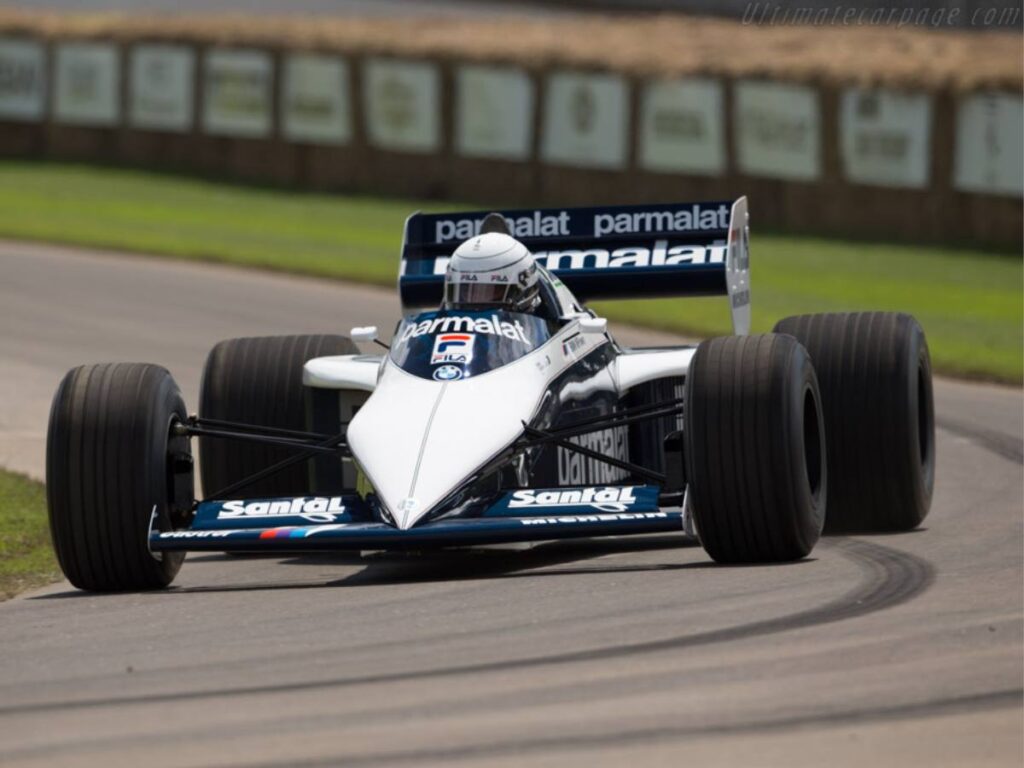
In the 1980s, BMW made a notable entry into Formula One with its turbocharged M12/13/1 engine. The engine was developed for the Brabham team and powered them from 1982 to 1988. The BT50 chassis, designed by Gordon Murray, was tailored to accommodate the engine. However, the initial performances of the car were plagued by reliability issues until Bosch introduced a digital electronic management system.
The BT50 debuted in 1982, with Nelson Piquet and Riccardo Patrese qualifying second and fourth in South Africa. Although the car suffered an early retirement, Piquet went on to win the Brazilian Grand Prix in the Cosworth-powered BT49, while Patrese won the Monaco Grand Prix in the BT50. Piquet claimed the Drivers’ Championship in 1983 with the improved BT52, while BMW also supplied engines to the ATS team.
In 1984, BMW expanded its engine supply to three teams, including Arrows. Despite this, Piquet was unable to defend his championship. In 1985, Brabham switched to Pirelli tires, which turned out to be a miscalculation, and Piquet only won one race. The low-line BT55 chassis, designed by Murray in 1986, suffered from poor traction and numerous mechanical failures due to oil scavenge problems. Tragically, Elio de Angelis lost his life during testing that year and Brabham scored only two points. In 1987, BMW reduced its commitment, and Brabham managed to score ten points before withdrawing from Formula One. The remaining BMW engines were sold to Arrows, who achieved their best result in 1988. However, the M12/13 engine was banned in 1989 following a change in technical regulations that prohibited turbocharged engines.
What happened with the BMW-William partnership in F1?
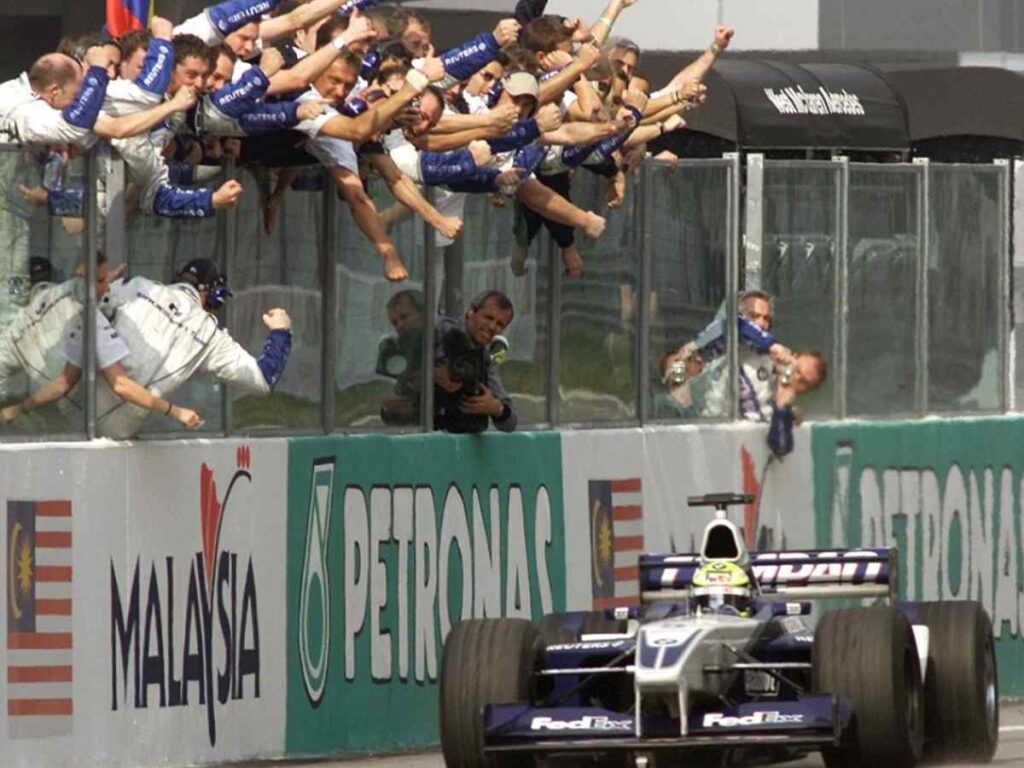
In 2000, BMW made a comeback to Formula One as an engine supplier for Williams. Their partnership was fruitful, with Ralf Schumacher securing podium finishes in the first season. The P80 engine, introduced in 2001, was more potent, and Williams won four races that year. They secured second place in the Constructors’ Championship in 2002, defeating McLaren, but only managed to win one race.
The 2003 season saw Schumacher and Juan Pablo Montoya winning two races each, but Ferrari remained dominant. In 2004, the team slipped to fourth place, and Montoya’s win in the Brazilian Grand Prix was their sole victory. In 2005, none of their drivers claimed a win, and the team finished in fifth place. BMW believed their engines were championship-winning caliber, but they felt the Williams chassis was holding them back. This led to a strain in their relationship with Williams. BMW made an offer to buy Williams, but it was turned down, so they acquired the Sauber team instead for the 2006 season.
What happened with the BMW-Sauber F1 team?
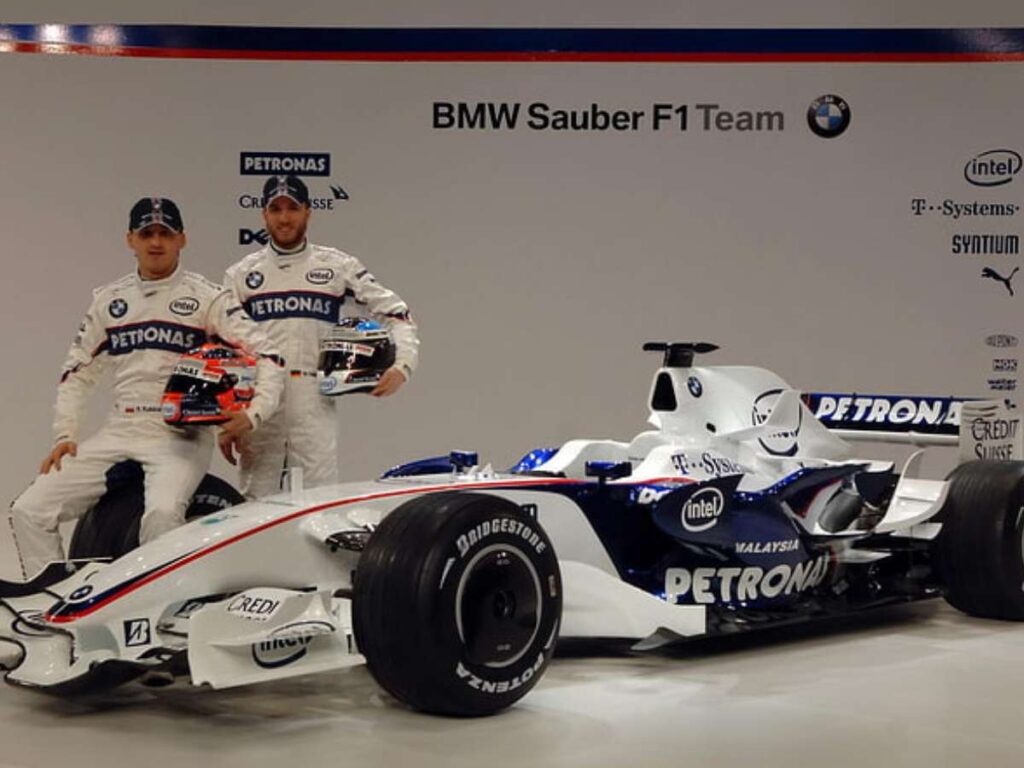
In 2005, BMW purchased the Swiss Sauber team and created the BMW Sauber F1 team for the 2006 season. They retained Nick Heidfeld and Robert Kubica as their lead and test drivers, respectively. The team introduced their P86 V8 engine and unveiled their traditional blue and white livery with a dash of red. They secured their first points at the Malaysian Grand Prix and finished the season in fifth place in the Constructors’ Championship with two podium finishes. In 2007, BMW Sauber had a strong start with their F1.07 car, establishing themselves as the third-fastest team behind Ferrari and McLaren. They secured 101 points and second place in the Constructors’ Championship after McLaren’s disqualification.
The 2008 season saw the team set their sights on achieving their first win, which they accomplished in the Canadian Grand Prix by Robert Kubica. However, their focus shifted to developing the 2009 regulations, resulting in a drop in form. They finished the season in third place in the Constructors’ Championship. The 2009 season was disappointing, with the team struggling to collect points due to failed upgrades.
Despite confirming its driver lineup, BMW withdrew from Formula One at the end of the season for strategic reasons. Qadbak Investments purchased the team but failed to secure the necessary funds, leading founder Peter Sauber to repurchase the team on the condition of receiving an FIA entry for the 2010 season. For the 2010 season, Sauber used Ferrari engines. The BMW Sauber F1 team achieved one win, four pole positions, 17 podium finishes, and second place in the Constructors’ Championship in 2007.
Why did BMW leave F1?
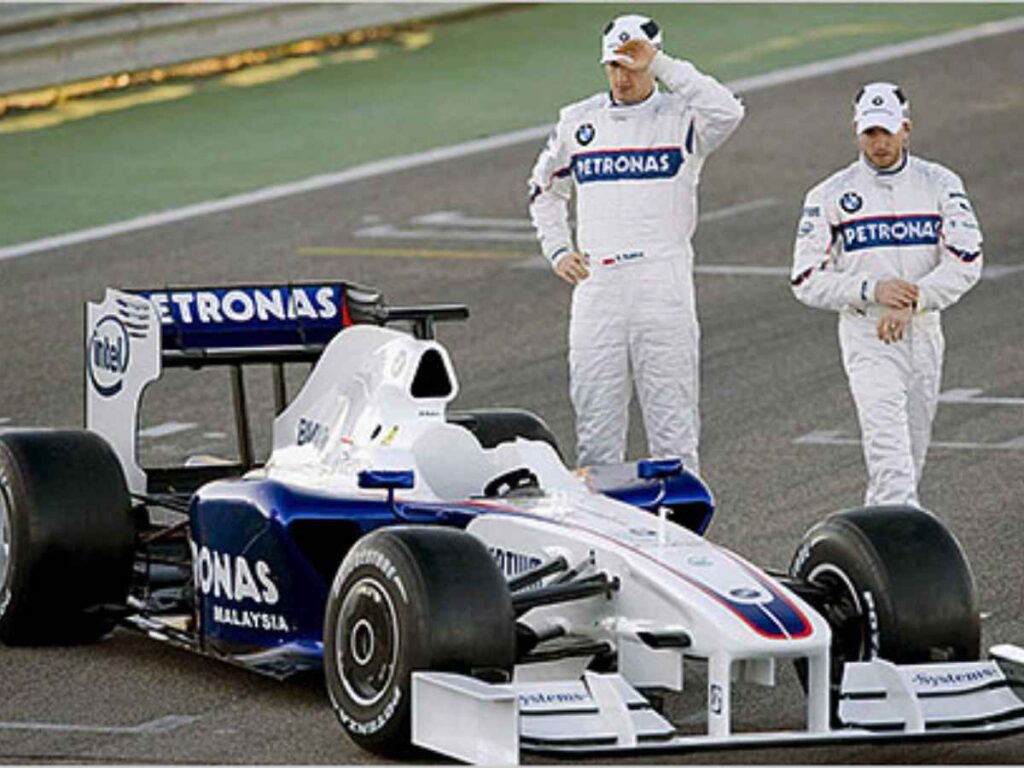
In 2008, the global financial crisis impacted the manufacturing industry, leading to a decline in sales and credit availability. As a result, BMW’s participation in Formula One became financially unsustainable. With the high cost of an F1 program, BMW found it challenging to justify the investment during this time of economic uncertainty. Moreover, the company’s lack of success in the sport and the limited technological influence on road cars meant that F1 was no longer a viable investment for BMW.
In addition to the financial challenges, the FIA proposed a budget cap on team spending in 2009, which was met with resistance from most teams, including BMW. The company did not sign the Concorde Agreement and subsequently withdrew from the sport. Furthermore, BMW’s desire to focus on developing the technological requirements for their road vehicles was also a contributing factor to their decision to leave F1. Ultimately, a combination of the global financial crisis, lack of success, and limited R&D opportunities led to BMW’s departure from Formula One.
Is BMW in any other motorsport?
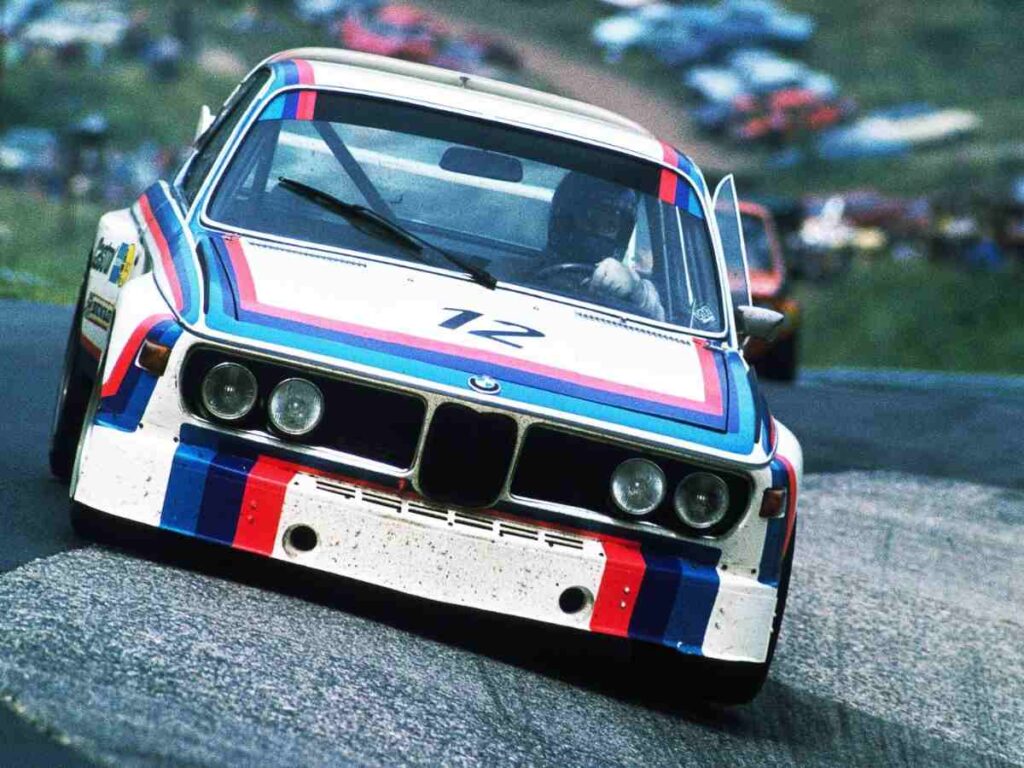
In 2009, BMW opted out of Formula One due to the exorbitant expenses and meager returns. Presently, the company has ventured into several motorsport competitions. Under the BMW M Motorsport program, teams can procure top-of-the-line, race-ready vehicles designed in Munich, which guarantee maximum performance, durability, and cost-effectiveness. BMW Motorrad Motorsport is now in its third WorldSBK season, partnering with Bonovo Action BMW Racing Team, currently under the guidance of the former BMW works rider, Eugene Laverty.
Looking forward to the 2023 season, BMW Motorsport has released its racing agenda and driver roster, featuring both new and seasoned racers. In the upcoming season, BMW will showcase the brand-new BMW M Hybrid V8 in the IMSA WeatherTech SportsCar Championship and the BMW M4 GT3 in GT World Challenge Europe and the Intercontinental GT Challenge, among other competitions.
In case you missed it:







